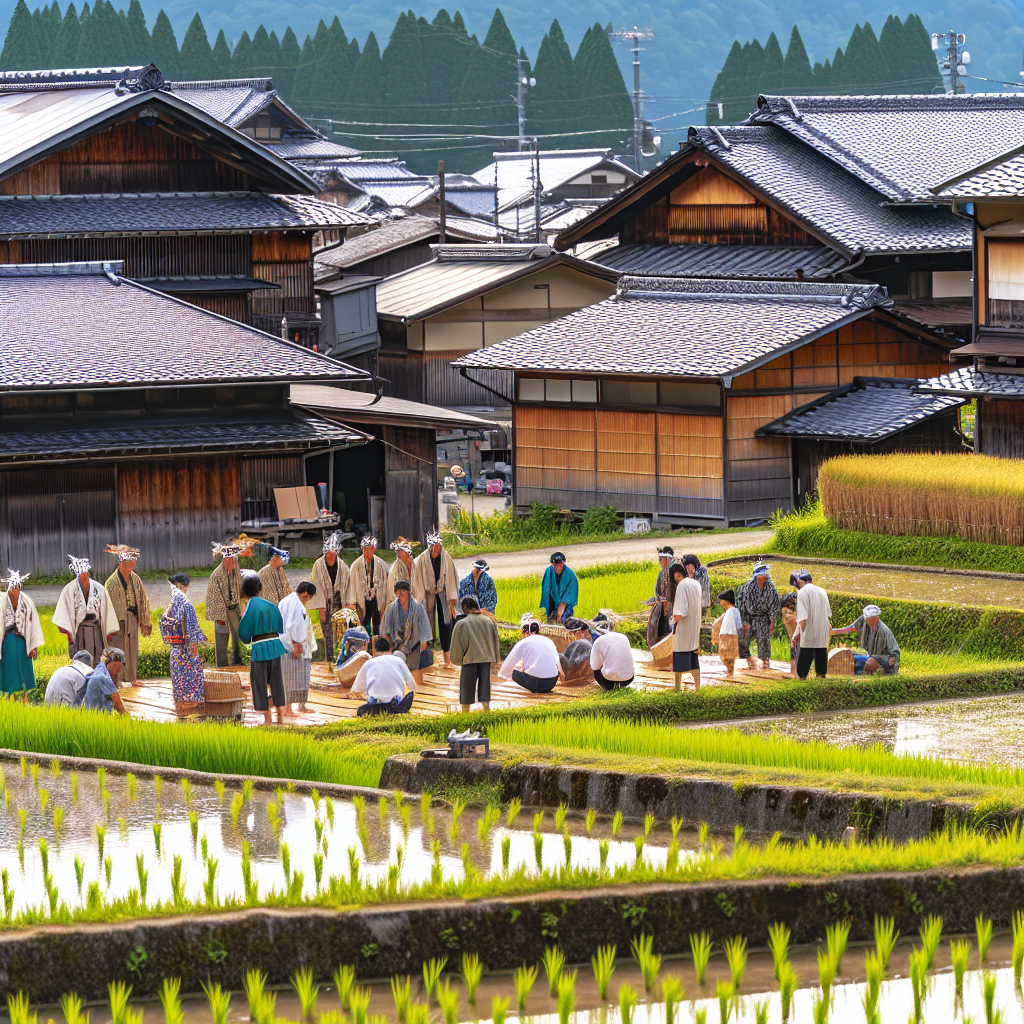Japan’s rural landscapes offer a window into deeply-rooted traditions, providing authentic experiences far from urban centers. This article explores the essence of rural Japanese culture, focusing on Nakadate village life and the enduring spirit of community-centered tourism.
Beyond City Lights: Discovering Hidden Japan
In Nakadate, the rhythm of life resonates with timeless practices passed through generations, preserving the essence of rural Japanese culture. Here, **agrarian traditions** remain pivotal; fields of rice sway gently in the breeze, and seasonal festivals are vibrant reflections of local folklore. Interwoven with **community-centered tourism**, these rituals invite visitors to engage deeply with everyday life, fostering **cross-cultural understanding**. Local residents embody **Japanese local wisdom**, sharing tales that weave together **nature and spirituality**, showcasing the vital connections between land, heritage, and identity.
The Rhythm of Rural Japanese Culture
In Nakadate, the essence of agrarian Japanese traditions is felt in every aspect of daily life. The villagers practice time-honored techniques, from rice cultivation to craft-making, preserving local wisdom that has been passed down through generations. This intergenerational heritage fosters a robust community-centered tourism, where visitors are invited to engage in mindful travel, reconnecting with the earth and each other. As the rhythms of nature dictate the seasons, the authentic countryside lifestyle unfolds, revealing narratives of timeless Japan, rich in culture and spirituality.
A Spirit of Celebration: Traditional Festivals in Nakadate
In Nakadate, traditional festivals serve as vibrant expressions of community spirit, featuring dynamic music, intricate dances, and sacred rituals. Each celebration encapsulates the village’s rich cultural heritage, ensuring that ancestral practices are passed down through generations. As families come together to partake, they engage in age-old customs, fostering a sense of belonging and continuity. These gatherings not only showcase local artistry but also reinforce regional identity, allowing villagers to narrate their stories through the threads of their shared experiences, nurturing both local wisdom and celebration of their agrarian roots.
Journeys of Reflection: Mindful and Slow Travel
As travelers venture into Nakadate, the allure of *slow travel Japan* invites a richer connection to its serene landscape and vibrant customs. Mindful exploration allows for deep reflection, where visitors engage in agrarian traditions and participate in the community’s daily rhythms. By embracing rituals such as rice planting and seasonal festivals, travelers gain insight into the *intergenerational heritage* that binds local families. This immersive experience fosters an authentic bond with Japan’s spiritual essence, presenting a compelling narrative of *nature and spirituality* intertwined within the rural tapestry. Through slow travel, one discovers the *regional identity* that shapes every facet of Nakadate life, echoing the wisdom of *voices of rural Japan* that resonate through time.
Voices and Stories: Preserving Regional Narratives
In the undulating landscapes of Nakadate, the narratives woven by its residents serve as a testament to Japan’s rich rural culture. Each local festival celebrated here is a vibrant display of intergenerational heritage, reflecting ancient agrarian traditions. As community-centered tourism thrives, travelers engage intimately with *local wisdom*, absorbing tales that transcend time. These voices resonate through heritage walking tours, where food and folklore reveal the essence of daily life. In sharing these stories, Nakadate nurtures a resilient regional identity, ensuring that its unique cultural tapestry endures amid the quiet, vanishing towns of Japan.
Takeaways from This Article
Venturing into Japan’s rural heartlands reveals a harmonious blend of traditions, landscapes, and wisdom. Through mindful travel and cultural immersion, one finds not only Japan’s hidden beauty but also insights into a slower, reflective way of living.

Leave a Reply